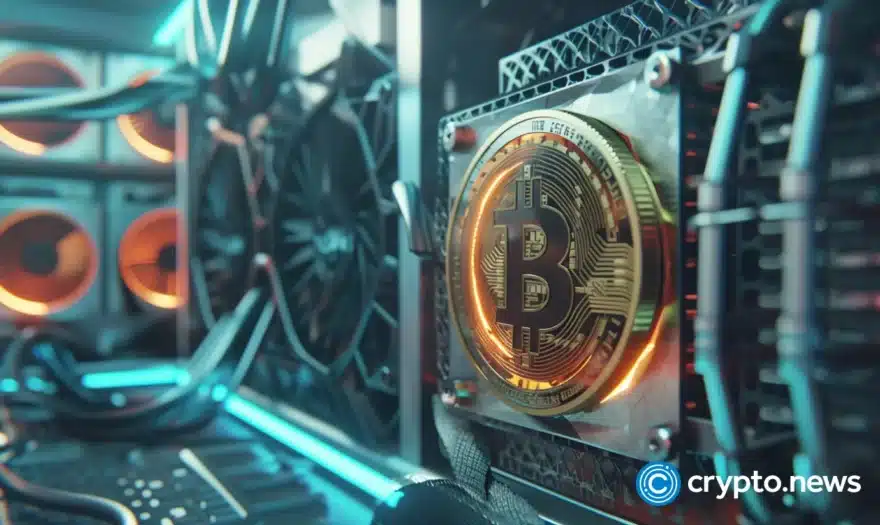What is an ICO: Understanding initial coin offerings

Learn what is an ICO, how it works, and its benefits and risks in our comprehensive guide on initial coin offerings.
Anyone interested in blockchain and crypto must have heard the term initial coin offering (ICO) mentioned at least once. This guide is meant for those who ask the question, what is an ICO? It is an important component of crypto, and understanding how it functions, its nuances, history, benefits, challenges, and future prospects is crucial.
Table of Contents
What is an ICO?
An ICO is a fundraising method used primarily by startups in the blockchain and crypto industry to bypass the rigorous and regulated traditional capital-raising process required by venture capitalists or banks.
In an ICO, a blockchain project offers digital tokens in exchange for cash or other cryptocurrencies like Bitcoin (BTC) or Ethereum (ETH). These tokens may represent a stake in the project or hold some utility related to the product or service on offer.
How does an ICOs work?
To answer the question how does an ICO work, we must first review the basics of blockchain technology.
An ICO typically involves creating a new cryptocurrency or token native to a project and offering it to investors.
The token then acts as a quasi-share in the crypto startup, similar to how shares are issued in an initial public offering (IPO) on the traditional stock market. However, digital tokens usually do not give investors a legal claim on a project’s assets, as is the case when purchasing shares in a company.
Here’s a step-by-step overview of how ICOs generally work:
- Whitepaper creation: The project team drafts a whitepaper outlining its goals, its technology, how much money it needs, and the type of currency it will accept.
- Token generation: The team then creates the digital tokens that will be sold during the ICO.
- Marketing: The project promotes the ICO to attract potential investors. This may involve social media campaigns, email marketing, and public relations efforts.
- Token sale: Investors purchase the tokens using established cryptocurrencies.
- Project development: Finally, the team uses the raised funds to develop the project.
ICOs usually run for a set period during which investors can purchase the new digital tokens in exchange for BTC, ETH, or whatever cryptocurrency a project has approved.
However, since most ICOs are run on the Ethereum blockchain, ETH is often the most popular digital currency used to invest in the token sale market.
Types of ICOs
ICOs can be broadly categorized into two types:
- Private ICOs: In a private ICO, only a select group of investors participate in the process. They are often venture capital firms and high-net-worth angel investors. In this type of ICO, a company may set a minimum investment amount to which an investor may contribute.
- Public ICOs: These types of ICOs are open to the general public and often attract a larger number of investors. Some feel they are a more democratic form of investing since almost anyone can participate. However, due to regulatory concerns, private ICOs have become more preferable avenues for raising capital than public ICOs.
In addition to being private or public, we can also categorize ICOs based on the tokens they offer investors. Here, there are also two broad groups:
- Utility token: Here, initial coin offerings provide investors with tokens that give them future access to the product or service offered by a project.
- Security token: These tokens represent ownership in the company and may entitle investors to a share of its profits.
History of ICOs
The concept of an ICO was first popularized in 2013 when Mastercoin (now known as Omni) raised approximately $500,000 in Bitcoin from around 500 investors.
A year later, in April 2014, the MaidSafe project also held a crowd sale where it managed to raise over $6,000,000 worth of Mastercoin and Bitcoin to create the first autonomous data network.
2014 also witnessed one of the most prominent ICOs in the history of cryptocurrencies. Ethereum held a token sale in July and August to fund the development of its decentralized smart contract network, during which it raised $18 million by selling ETH in exchange for Bitcoin.
2016 was the year when the ICO market truly began to flourish, leading to several very innovative projects conducting successful crowd sales. Projects such as Lisk, Stratis, Iconomi, and Waves were some of the most notable blockchain projects among the 50+ ICOs that took place last year.
In 2017, Filecoin’s ICO significantly impacted the crypto world by raising over $200 million, setting a high bar for future offerings. That same year, Tezos also made headlines with its ICO, which brought in an impressive $232 million.
In 2018, EOS made history with its year-long ICO, raising an astounding $4 billion and marking one of the largest fundraising events in crypto history. The project focused on solving scalability issues plaguing existing blockchain platforms, aiming to process millions of transactions per second without transaction fees.
Today, startups seem to be launching token sales on a daily basis with varying viability and success. According to the token sale database ICO Drops, there are 161 active ICOs at the time of this writing, with another 422 slated to launch in the coming days and weeks.
How ICOs differ from traditional fundraising
ICOs vs IPOs
An ICO and IPO may seem similar since both involve raising funds, but they differ fundamentally. While IPOs involve selling company shares to the public in a regulated environment, ICOs sell tokens in an often unregulated space.
Furthermore, IPO investors gain ownership and voting rights upon purchasing a company’s stock. In contrast, ICO investors only gain access to a service or future profit from a token’s potential increase in value.
Recently, the U.S. Securities and Exchange Commission (SEC) has been cracking down on ICOs, insisting that if an ICO token satisfies the Howey Test, then it qualifies as a security and becomes subject to relevant security regulations.
ICOs vs. venture capital
Venture capital involves raising funds from private investors in exchange for equity. This process is highly regulated and involves significant due diligence.
On the other hand, ICOs are more accessible, allowing small investors to participate without intermediaries. However, this accessibility comes with higher risks due to less regulatory oversight.
Steps involved in launching an ICO
The goal of ICOs is to leverage the decentralized systems of blockchain technology in fundraising and to align the interests of various stakeholders.
To launch an ICO, you should do the following:
- Research and planning: Each ICO begins with the intention of raising capital. As such, you must thoroughly research the market and create a detailed business plan.
- Whitepaper development: Upon establishing a target group for your campaign through research, you’ll then craft a comprehensive whitepaper to attract investors. The whitepaper must be as detailed and transparent as possible. It must cover information such as the project’s intended goal, its financial needs, the duration of the campaign, and the acceptable type of currency, whether BTC, ETH, USD, or dollar stablecoins such as USDT and USDC.
- Token design and smart contract development: Once the whitepaper is published and publicized, you will need to develop the technical aspects of the token you plan to offer to your investors, including the blockchain you will build it on and the smart contracts that will enable it to function as intended.
- Marketing and community building: With your whitepaper and token in hand, you will next need to start building a solid community and marketing the ICO to potential investors. Promotion campaigns are crucial in attracting potential investors and are usually conducted online to achieve the broadest investor reach. You will also need to create a “whitelist” of verified investors who have gone through a know-your-customer (KYC) process to ascertain whether selling your token to them complies with the regulations of the jurisdictions they are in.
- Token sale and distribution: Once your marketing campaign has hit a fever pitch and you have enough people registered in your whitelist, you may proceed to conduct the token sale.
- Post-ICO development: The company will then use the received funds to facilitate its plan, while the investors will use the acquired tokens to benefit from the product or service your project is offering or wait for a rise in the value of the tokens.
Risks and challenges
Investing in ICOs carries several risks:
- Regulatory risks: Many countries lack clear regulations for ICOs, leading to potential legal issues.
- Market volatility: Cryptocurrencies are highly volatile, which can affect the value of the tokens being offered. A past study revealed that about 90% of the tokens provided through ICOs were trading below their initial prices after six months.
- Scams and fraud: The ICO space has seen numerous scams and frauds such as rug pulls, where projects disappear with investors’ funds.
- Technical risks: Bugs and vulnerabilities in the smart contract or blockchain can also jeopardize the viability and profitability of a project.
Benefits of ICOs
Despite the risks, ICOs also offer several benefits:
- Access to capital: ICOs allow crypto startups to raise significant amounts of capital without having to go through the exhausting red tape of traditional banking methods.
- Market accessibility: ICOs also make it possible for anyone with an internet connection to invest in a project, therefore democratizing the investment process.
- Innovation: These initial coin offerings have helped to fund innovative projects that might not have received support through conventional means.
- Liquidity: A project’s token can often be traded on crypto exchanges shortly after its ICO, thus providing liquidity to investors, especially those wishing to divest their holdings for a profit.
Future of ICOs
The future of ICOs depends largely on regulatory developments. Clear regulations can help reduce fraud and provide a safer environment for investors. Additionally, advancements in blockchain technology may lead to more secure and efficient ICO processes.
Furthermore, as the market matures, we might see a blend of ICO and traditional fundraising methods, offering the best of both worlds.
Nonetheless, while ICOs offer exciting opportunities for both investors and startups, they also come with significant risks. Therefore, understanding what is an ICO and how it functions is essential for anyone interested in the crypto market.
By staying informed and cautious, investors can navigate the ICO landscape more effectively. However, as with any investment, it is essential to do thorough research and due diligence before putting your money into any ICO.















